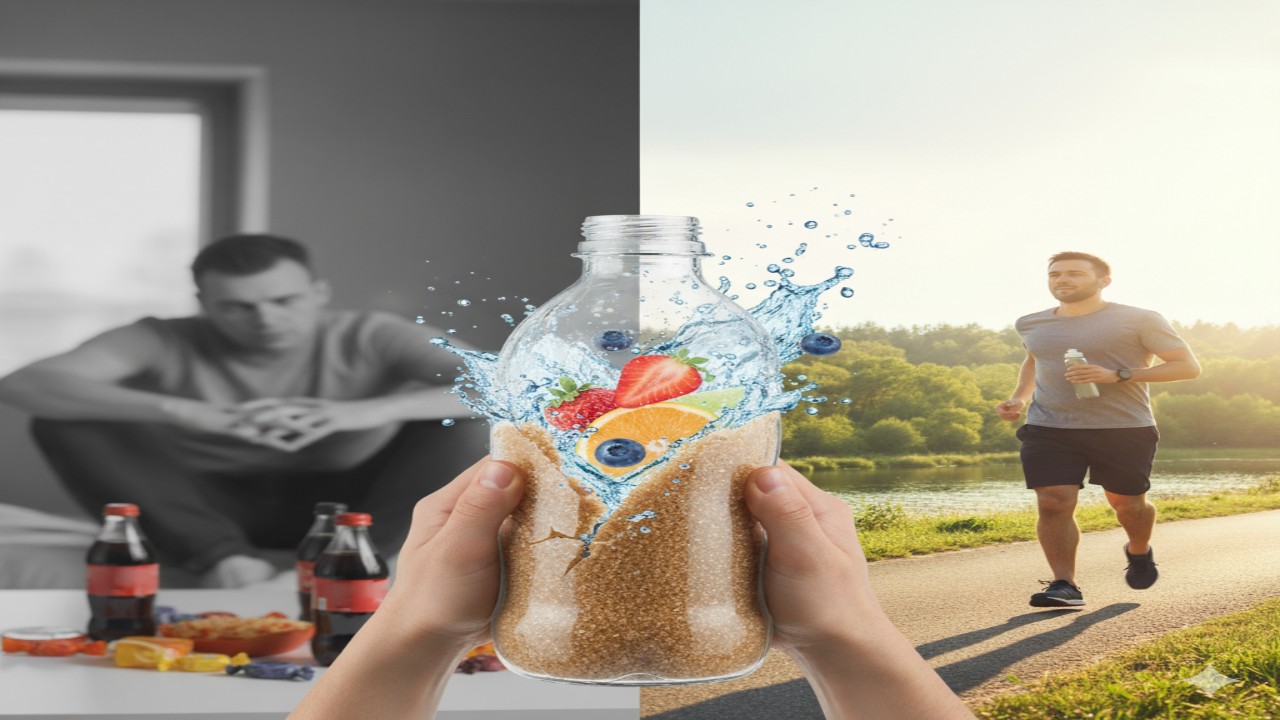In our fast-paced world, sugary drinks have become more than just beverages—they’re a lifestyle. From morning energy drinks to afternoon sodas and evening fruit punches, these sweet liquids have seamlessly integrated into our daily routines. But beneath their refreshing taste lies a hidden threat to our health that many of us choose to ignore.
The Sweet Epidemic: Understanding the Problem
Sugary drinks are one of the most significant sources of added sugar in the modern diet. A single can of soda contains approximately 39 grams of sugar—that’s nearly 10 teaspoons in just one serving. When you consider that the American Heart Association recommends no more than 25 grams of added sugar per day for women and 36 grams for men, it’s clear that even one sugary drink can exceed or nearly meet your entire daily limit.
The problem extends beyond just sodas. Sports drinks, sweetened teas, flavored coffees, energy drinks, and even seemingly healthy fruit juices can pack a serious sugar punch. These beverages have become so normalized in our culture that many people don’t realize they’re consuming liquid candy multiple times throughout the day.
The Hidden Dangers: What Sugar Does to Your Body
Weight Gain and Obesity
Liquid calories are particularly problematic because they don’t trigger the same satiety signals as solid foods. When you drink a 200-calorie soda, your body doesn’t compensate by eating less food later. These empty calories simply add to your total intake, making weight gain almost inevitable with regular consumption.
Research consistently shows that people who regularly consume sugary drinks have a significantly higher risk of obesity compared to those who limit their intake. The relationship is so strong that reducing sugary drink consumption is often one of the first recommendations for weight management.
Type 2 Diabetes Risk
The connection between sugary drinks and type 2 diabetes is particularly concerning. When you consume liquid sugar, it causes rapid spikes in blood glucose and insulin levels. Over time, this pattern can lead to insulin resistance—a precursor to diabetes.
Studies have found that people who consume one to two sugary drinks per day have a 26% greater risk of developing type 2 diabetes compared to those who rarely consume these beverages. The risk increases with higher consumption, creating a clear dose-response relationship.
Heart Disease
Your cardiovascular system also suffers from excessive sugar intake. High sugar consumption is linked to increased triglycerides, lower HDL (good) cholesterol, and higher blood pressure—all risk factors for heart disease.
Research has shown that adults who consume sugary drinks regularly have a higher risk of dying from cardiovascular disease. The sugar overload puts stress on your heart and blood vessels, accelerating the development of heart-related problems.
Dental Decay
The damage isn’t limited to internal organs. Your teeth bear the brunt of sugary drink consumption too. The sugar feeds harmful bacteria in your mouth, which produce acids that erode tooth enamel. Add the acidic nature of many soft drinks to the equation, and you have a recipe for cavities, decay, and expensive dental bills.
Liver Problems
Just like alcohol, excessive sugar consumption can lead to non-alcoholic fatty liver disease. When your liver is overwhelmed with fructose from sugary drinks, it converts the excess into fat. Over time, this can lead to serious liver damage, inflammation, and even scarring.
The Psychology of Liquid Sugar: Why It’s So Hard to Quit
Sugary drinks are engineered to be addictive. The combination of sugar, caffeine, and carefully calibrated flavors creates a powerful reward response in your brain. This triggers the release of dopamine—the same neurotransmitter involved in addiction.
Moreover, these drinks are everywhere: in vending machines, convenience stores, restaurants, and even in our homes. The constant availability combined with aggressive marketing makes avoiding them a real challenge.
Breaking Free: Practical Strategies to Limit Sugary Drinks
Start with Awareness
Track your current consumption for one week. Write down every sugary drink you consume, including portion sizes. This honest assessment often reveals that we’re drinking far more sugar than we realized.
Replace, Don’t Just Remove
Going cold turkey rarely works. Instead, replace sugary drinks with healthier alternatives:
Water remains the gold standard. If plain water seems boring, try infusing it with fresh fruits, cucumber, or mint leaves. The natural flavors make water more interesting without adding sugar or calories.
Sparkling water provides the fizz many people crave from soda without the sugar. Choose unsweetened varieties and add a splash of fresh juice if desired.
Herbal teas offer endless variety and can be enjoyed hot or cold. They’re naturally calorie-free and many varieties offer additional health benefits.
Black coffee or tea can satisfy caffeine needs without the sugar overload of energy drinks or flavored coffee beverages.
Gradual Reduction Approach
If you’re a heavy consumer, cutting back gradually may be more sustainable than quitting completely. Start by reducing your intake by one drink per day or diluting your beverages with water or ice. Each week, reduce a bit more until you’ve reached your goal.
Master the Art of Saying No
Learn to decline sugary drinks in social situations. Order water with lemon at restaurants, bring your own beverages to gatherings, and politely refuse when offered soft drinks. Your health is worth the momentary awkwardness.
Address the Root Cause
Often, we reach for sugary drinks to address underlying issues: fatigue, stress, boredom, or habit. Identify your triggers and find healthier solutions. If you’re tired, a short walk or power nap might serve you better than an energy drink. If you’re stressed, try deep breathing or a quick meditation.
Read Labels Carefully
Sugar hides under many names: high fructose corn syrup, cane juice, agave nectar, and dozens of other terms. Learn to identify these ingredients and check nutrition labels, even on drinks marketed as “healthy” or “natural.”
Make It Inconvenient
Stop buying sugary drinks for your home. If they’re not readily available, you’re much less likely to consume them. Replace refrigerator space previously occupied by soda with water bottles, sparkling water, or unsweetened beverages.
What About Fruit Juice?
Many people believe fruit juice is a healthy alternative to soda, but the reality is more complex. While juice contains some vitamins, it’s often just as high in sugar as soft drinks and lacks the beneficial fiber found in whole fruit.
A glass of orange juice contains about 21 grams of sugar—not much less than a can of soda. Even 100% fruit juice without added sugars can contribute to weight gain and blood sugar spikes when consumed in large quantities.
The better choice? Eat whole fruits and drink water. You’ll get all the nutrients and fiber while consuming less sugar and feeling more satisfied.
Diet Drinks: Friend or Foe?
Switching to diet sodas seems like an obvious solution, but the evidence on artificial sweeteners is mixed. While they don’t contain calories or sugar, some research suggests they may alter gut bacteria, increase cravings for sweet foods, and potentially contribute to metabolic problems.
Diet drinks can serve as a transitional tool when cutting back on regular soda, but water and other naturally unsweetened beverages should be your ultimate goal.
The Timeline: What Happens When You Cut Out Sugary Drinks
Understanding the benefits you’ll experience can motivate you to stick with your commitment:
First Week: You may experience some withdrawal symptoms like headaches (especially if you’re cutting caffeine) and cravings. Your taste buds will start adjusting to less sweet flavors.
First Month: Energy levels often stabilize. Many people report better sleep, clearer skin, and initial weight loss. Your blood sugar levels begin to normalize.
Three Months: Significant changes become apparent. Weight loss continues if you were overweight, blood pressure may decrease, and your risk markers for diabetes improve. Dental health begins to improve as tooth enamel starts recovering.
Six Months and Beyond: Your taste preferences have likely changed—sugary drinks that once tasted good may now seem overwhelmingly sweet. Your risk for chronic diseases continues to decrease, and you’ve established healthier hydration habits.
Special Considerations for Different Age Groups
Children and Teens
Limiting sugary drinks is especially crucial for young people. Early habits tend to persist into adulthood, and children who regularly consume sugary drinks are more likely to become obese and develop metabolic problems.
Parents should model healthy beverage choices, keep sugary drinks out of the home, and teach children to appreciate water and milk as primary beverages.
Pregnant Women
Excessive sugar intake during pregnancy is linked to gestational diabetes, excessive weight gain, and increased risk of complications. Pregnant women should be particularly mindful of limiting sugary drinks.
Athletes
Even athletes, who may need more calories, should obtain them from nutritious sources rather than sugary drinks. While sports drinks can be appropriate during intense, prolonged exercise, water is sufficient for most workouts.
Creating a Supportive Environment
Success in limiting sugary drinks often requires environmental changes:
Keep a reusable water bottle with you at all times. When water is convenient, you’re more likely to choose it.
Invest in a quality water filter if tap water taste is an issue. Good-tasting water encourages consumption.
Recruit family members or friends to join you. Social support dramatically increases your chances of success.
Celebrate milestones. Acknowledge when you’ve gone a week, month, or longer without sugary drinks.
The Bottom Line
Limiting sugary drinks is one of the most powerful changes you can make for your health. The benefits extend far beyond weight management—you’re reducing your risk of diabetes, heart disease, liver problems, and dental issues while potentially adding years to your life.
The transition may be challenging at first, but remember that your taste preferences will adjust. What seems difficult now will become second nature with time. Your body will thank you with more energy, better health markers, and a reduced risk of chronic disease.
Start today. Your future self will be grateful you did.
Remember: Small changes lead to big results. You don’t have to eliminate sugary drinks overnight. Every reduction is a step toward better health. If you’re managing a chronic health condition or have concerns about changing your diet, consult with a healthcare professional for personalized guidance.








